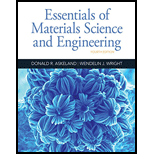
(a)
Interpretation:
The composition range for which Tl-Pb alloy is fully liquid at
Concept Introduction:
A phase has uniform physical and chemical properties and is bounded by a surface due to which two phases can be
Phase diagrams are the geometrical representation of the conditions such as temperature, pressure, composition, etc. of a system at which different phases present in the system exists and are in
These phase diagrams contain phase boundaries which are lines that mark the conditions under which multiple phases can coexist at the equilibrium. Along these lines, the transition of phase occurs.
The point where these phase boundaries intersect are the triple points. At these points, three different phases can exist simultaneously.
On the temperature-composition graph of an alloy, the curve above which the alloy exist in the liquid phase is the liquidus curve. The temperature at this curve is the maximum temperature at which the crystals in the alloy can coexist with its melt in the thermodynamic equilibrium.
Solidus curve is the locus of the temperature on the temperature composition graph of an alloy, beyond which the alloy is completely in solid phase.
Between the solidus and liquidus curve, the alloy exits in a slurry form in which there is both crystals as well as alloy melt.
Solidus temperature is always less than or equal to the liquidus temperature.
(b)
Interpretation:
The composition range for which Tl-Pb alloy is fully solid at
Concept Introduction:
A phase has uniform physical and chemical properties and is bounded by a surface due to which two phases can be mechanically separated from each other.
Phase diagrams are the geometrical representation of the conditions such as temperature, pressure, composition, etc. of a system at which different phases present in the system exists and are in thermodynamic equilibrium.
These phase diagrams contain phase boundaries which are lines that mark the conditions under which multiple phases can coexist at the equilibrium. Along these lines, the transition of phase occurs.
The point where these phase boundaries intersect are the triple points. At these points, three different phases can exist simultaneously.
On the temperature-composition graph of an alloy, the curve above which the alloy exist in the liquid phase is the liquidus curve. The temperature at this curve is the maximum temperature at which the crystals in the alloy can coexist with its melt in the thermodynamic equilibrium.
Solidus curve is the locus of the temperature on the temperature composition graph of an alloy, beyond which the alloy is completely in solid phase.
Between the solidus and liquidus curve, the alloy exits in a slurry form in which there is both crystals as well as alloy melt.
Solidus temperature is always less than or equal to the liquidus temperature.
(c)
Interpretation:
The composition range for which Tl-Pb alloy is partly liquid and partly solid at
Concept Introduction:
A phase has uniform physical and chemical properties and is bounded by a surface due to which two phases can be mechanically separated from each other.
Phase diagrams are the geometrical representation of the conditions such as temperature, pressure, composition, etc. of a system at which different phases present in the system exists and are in thermodynamic equilibrium.
These phase diagrams contain phase boundaries which are lines that mark the conditions under which multiple phases can coexist at the equilibrium. Along these lines, the transition of phase occurs.
The point where these phase boundaries intersect are the triple points. At these points, three different phases can exist simultaneously.
On the temperature-composition graph of an alloy, the curve above which the alloy exist in the liquid phase is the liquidus curve. The temperature at this curve is the maximum temperature at which the crystals in the alloy can coexist with its melt in the thermodynamic equilibrium.
Solidus curve is the locus of the temperature on the temperature composition graph of an alloy, beyond which the alloy is completely in solid phase.
Between the solidus and liquidus curve, the alloy exits in a slurry form in which there is both crystals as well as alloy melt.
Solidus temperature is always less than or equal to the liquidus temperature.
Trending nowThis is a popular solution!

Chapter 10 Solutions
Essentials Of Materials Science And Engineering
 MATLAB: An Introduction with ApplicationsEngineeringISBN:9781119256830Author:Amos GilatPublisher:John Wiley & Sons Inc
MATLAB: An Introduction with ApplicationsEngineeringISBN:9781119256830Author:Amos GilatPublisher:John Wiley & Sons Inc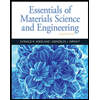 Essentials Of Materials Science And EngineeringEngineeringISBN:9781337385497Author:WRIGHT, Wendelin J.Publisher:Cengage,
Essentials Of Materials Science And EngineeringEngineeringISBN:9781337385497Author:WRIGHT, Wendelin J.Publisher:Cengage,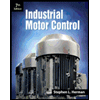 Industrial Motor ControlEngineeringISBN:9781133691808Author:Stephen HermanPublisher:Cengage Learning
Industrial Motor ControlEngineeringISBN:9781133691808Author:Stephen HermanPublisher:Cengage Learning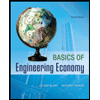 Basics Of Engineering EconomyEngineeringISBN:9780073376356Author:Leland Blank, Anthony TarquinPublisher:MCGRAW-HILL HIGHER EDUCATION
Basics Of Engineering EconomyEngineeringISBN:9780073376356Author:Leland Blank, Anthony TarquinPublisher:MCGRAW-HILL HIGHER EDUCATION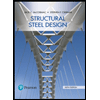 Structural Steel Design (6th Edition)EngineeringISBN:9780134589657Author:Jack C. McCormac, Stephen F. CsernakPublisher:PEARSON
Structural Steel Design (6th Edition)EngineeringISBN:9780134589657Author:Jack C. McCormac, Stephen F. CsernakPublisher:PEARSON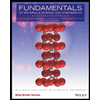 Fundamentals of Materials Science and Engineering...EngineeringISBN:9781119175483Author:William D. Callister Jr., David G. RethwischPublisher:WILEY
Fundamentals of Materials Science and Engineering...EngineeringISBN:9781119175483Author:William D. Callister Jr., David G. RethwischPublisher:WILEY





